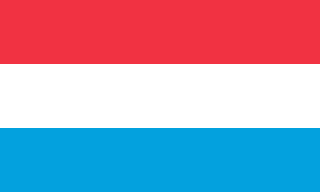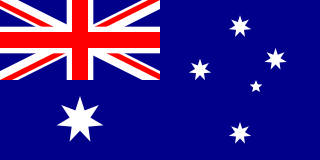
Luxembourg sent a delegation to compete at the 1992 Winter Olympics in Albertville, France from 8 to 23 February 1992. This marked Luxembourg's fourth appearance at a Winter Olympic Games. The Luxembourgian delegation in Albertville consisted of a single athlete, alpine skier Marc Girardelli. He won two silver medals at these Olympics, which positioned Luxembourg 17th place on the medal table.

Luxembourg sent a delegation to compete at the 1994 Winter Olympics in Lillehammer, Norway from 12–27 February 1994. The nation was making its fifth appearance at a Winter Olympic Games. The Luxembourgian delegation to Lillehammer consisted of a single athlete, alpine skier Marc Girardelli. His best performance in any event was fourth in the Super-G; he also finished fifth in the downhill and ninth in the combined. As well, he failed to finish the giant slalom, and was disqualified from the slalom.

The United Kingdom of Great Britain and Northern Ireland competed at the 1992 Winter Paralympics held in Tignes and Albertville, France. The team was known by it shortened name of Great Britain, for identification purposes.
Matthew Stockford is a British former Paralympic skier who won medals at the 1992 Winter Paralympics and 1994 Winter Paralympics. Stockford broke his back in a skiing accident in 1985. He competed using a monoski – a specially fitted chair over a single ski that includes seat belts and other strapping, as well as a suspension device to minimise wear and tear on the skier's body.
Richard Burt is a British former Paralympic skier who won medals at the 1992 Winter Paralympics and 1994 Winter Paralympics.

The 1998 Winter Paralympics were held in Nagano, Japan from 5–14 March 1998. At the Games, Australia was represented by four male alpine skiers. Australia tied for 16th place with Denmark, out of 21 Nations on the overall medal tally. James Patterson, an LW9 standing skier, won Australia's two medals - one gold and one bronze.

Australia competed at the 1992 Winter Paralympics in Tignes and Albertville in France. They were the first winter Paralympics to be celebrated concurrently with the Olympic Games. The official logo of the Games was designed by Jean-Michel Folon. It depicts a bird with broken wings, soaring high across the peak of a mountain. This was used to reflect the sporting abilities of the athletes at the Games. The official mascot, Alpy, designed by Vincent Thiebaut, represented the summit of the Grande Motte mountain in Tignes. Alpy was shown on a mono-ski to demonstrate its athleticism and the colours of white, green and blue were used to represent purity/snow, hope/nature and discipline/the lake. The 1992 Games were where Australia won their first winter medals at the Paralympics. Michael Milton won Australia's first gold with a win in the men's slalom LW2. Milton also won a silver medal in the men's super-G LW2. At these Games, Australia was represented by 5 male athletes. Australia was placed 12th in the overall medal tally for the Winter Games winning a total of 4 medals: 1 gold, 1 silver and 2 bronze.

The 1994 Winter Paralympics were held in Lillehammer, Norway. Australia sent six male skiers, who won three gold, two silver and four bronze medals. Australia, at the time, achieved their best ever performance at a Winter Paralympics, finishing 5th overall in the alpine skiing competition, 9th in the medal standings, and 11th in the total medal count out of 31 nations.
Patrick Cooper is a winter Paralympian from New Zealand who competed in the Paralympic Winter Games in 1988, 1992 and 1994 in the para alpine skiing.
Sarah Billmeier is an American para-alpine skier. She represented the United States in alpine skiing at the 1992, 1994, 1998 and 2002 Winter Paralympics. In total she won seven gold medals, five silver medals and one bronze medal.
Tristan Mouric is a French Paralympic athlete who competed both at the Summer and Winter Paralympics. In total, he won seven gold medals, three silver medals and one bronze medal.
Sandra Lynes is a Canadian para-alpine skier. She represented Canada at the 1992 Winter Paralympics and at the 1994 Winter Paralympics.
Rik Heid is an American para-alpine skier. He represented the United States at the Winter Paralympics in 1988, 1992 and 1994. In total he won two gold medals, five silver medals and three bronze medals.
Cathy Gentile-Patti is an American para-alpine skier. She represented the United States in alpine skiing at the 1992 Winter Paralympics held in Tignes and Albertville, France.
Gerda Pamler is a German former Paralympic alpine skier and artist. She competed at the 1992, 1994 and 1998 Winter Paralympics. She won six medals, two gold, three silver and one bronze.
Nadine Laurent is a French Paralympic alpine skier. She won a silver and a bronze medal at the 1992 Winter Paralympic Games in Albertville.
Renate Hjortland is a Norwegian Paralympic skier. She represented Norway in para-alpine skiing at the 1992 Winter Paralympic Games in France, and 1994 Winter Paralympic Games in Norway. She won a total of four medals, including three silver medals and one bronze medal.
Dagmar Vollmer is a German Paralympic skier. She represented Germany in alpine skiing in four Paralympic Winter Games. She won a total of three medals, including one silver medal and two bronze medals.
Carmen Haderer is an Austrian Paralympic alpine skier. She represented Austria in Paralympic alpine skiing at the 1992 Paralympic Winter Games in Albertville and 1994 Paralympic Winter Games in Lillehammer, where she won a bronze medal.
Marcela Mišúnová is a Czech and Slovak Paralympic alpine skier. She represented Czechoslovakia at the 1992 Paralympic Winter Games in Albertville, and Slovakia at the 1994 Paralympic Winter Games in Lillehammer. She won three medals, one silver and two bronze medals.


